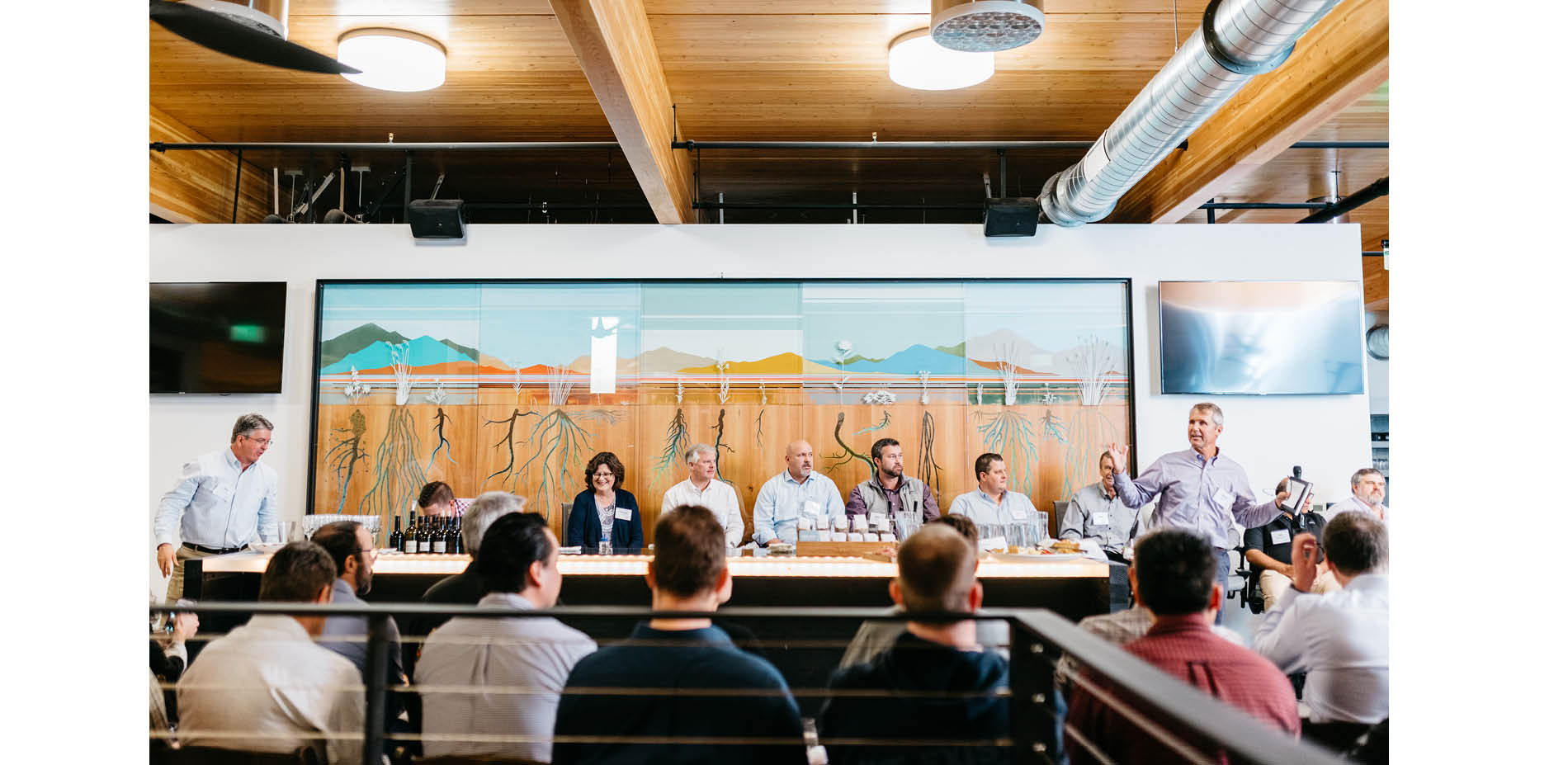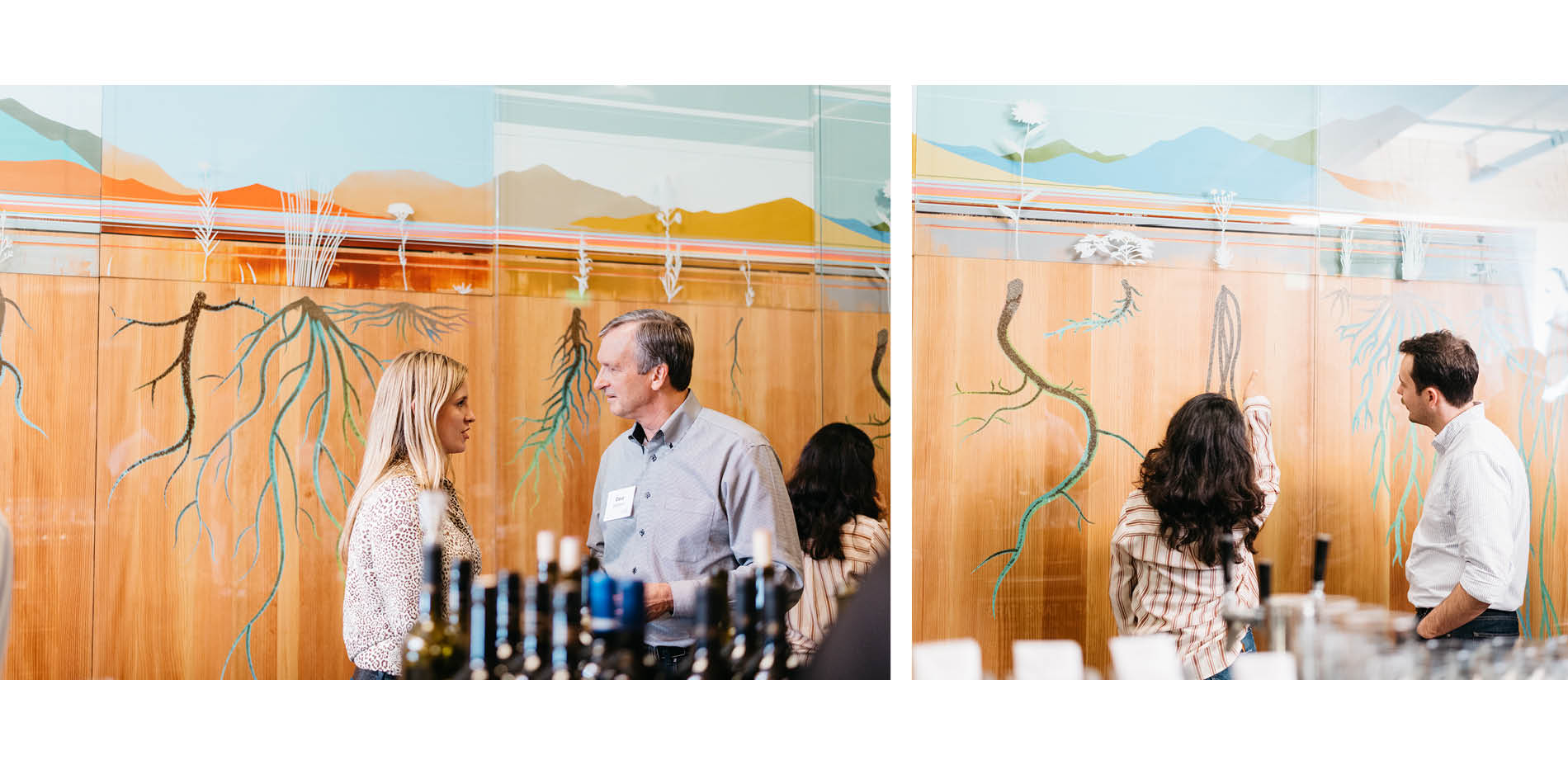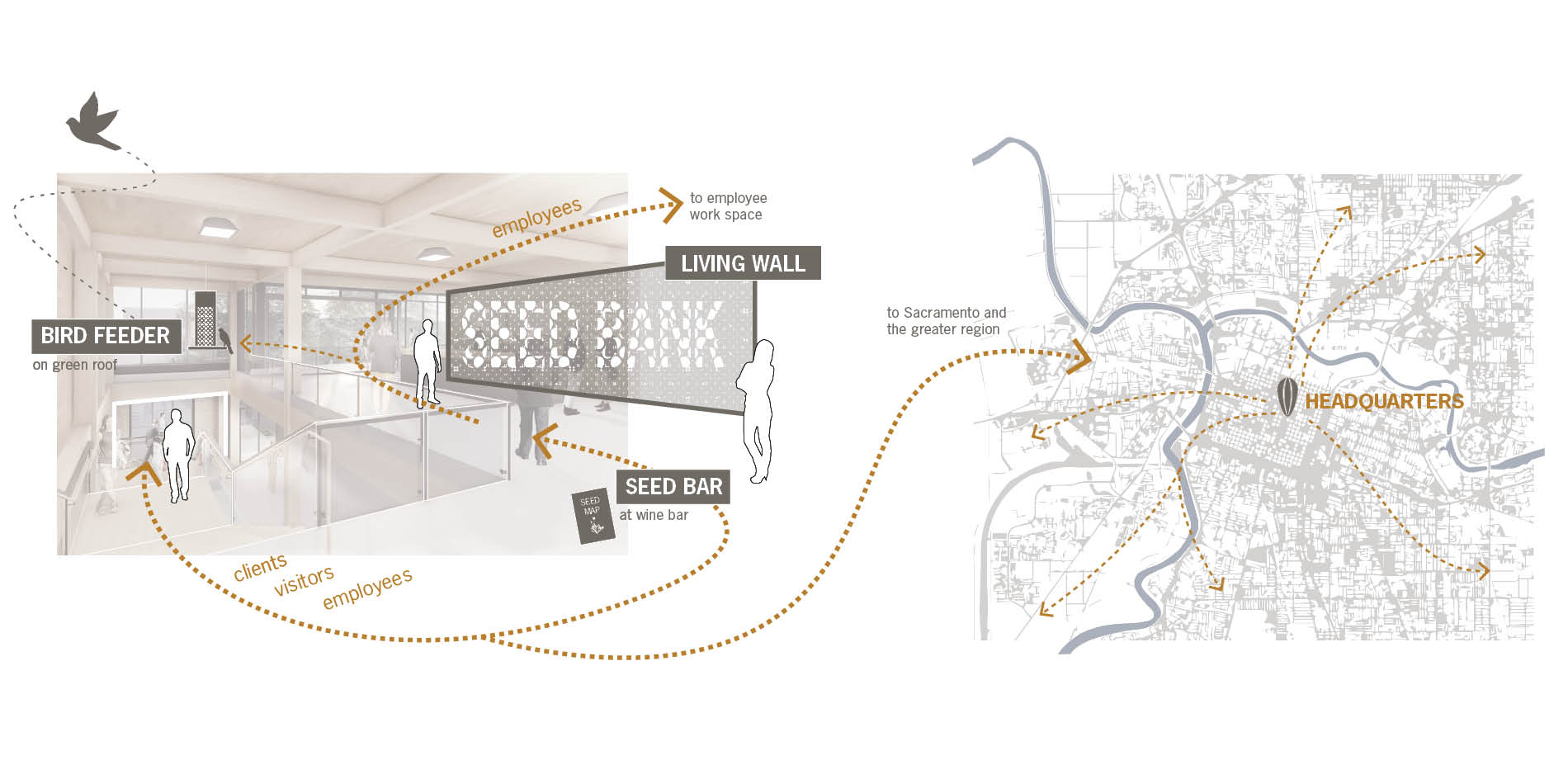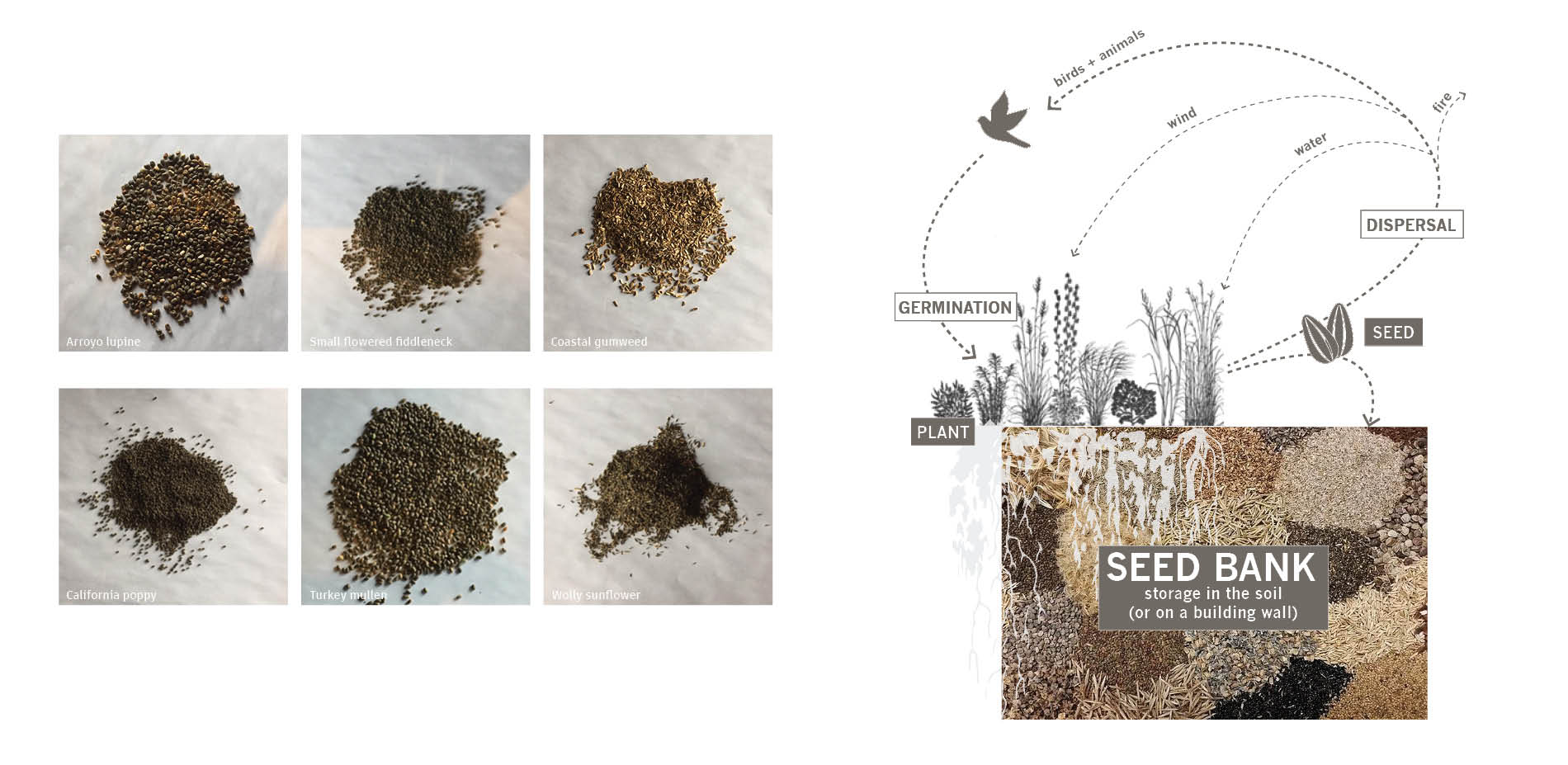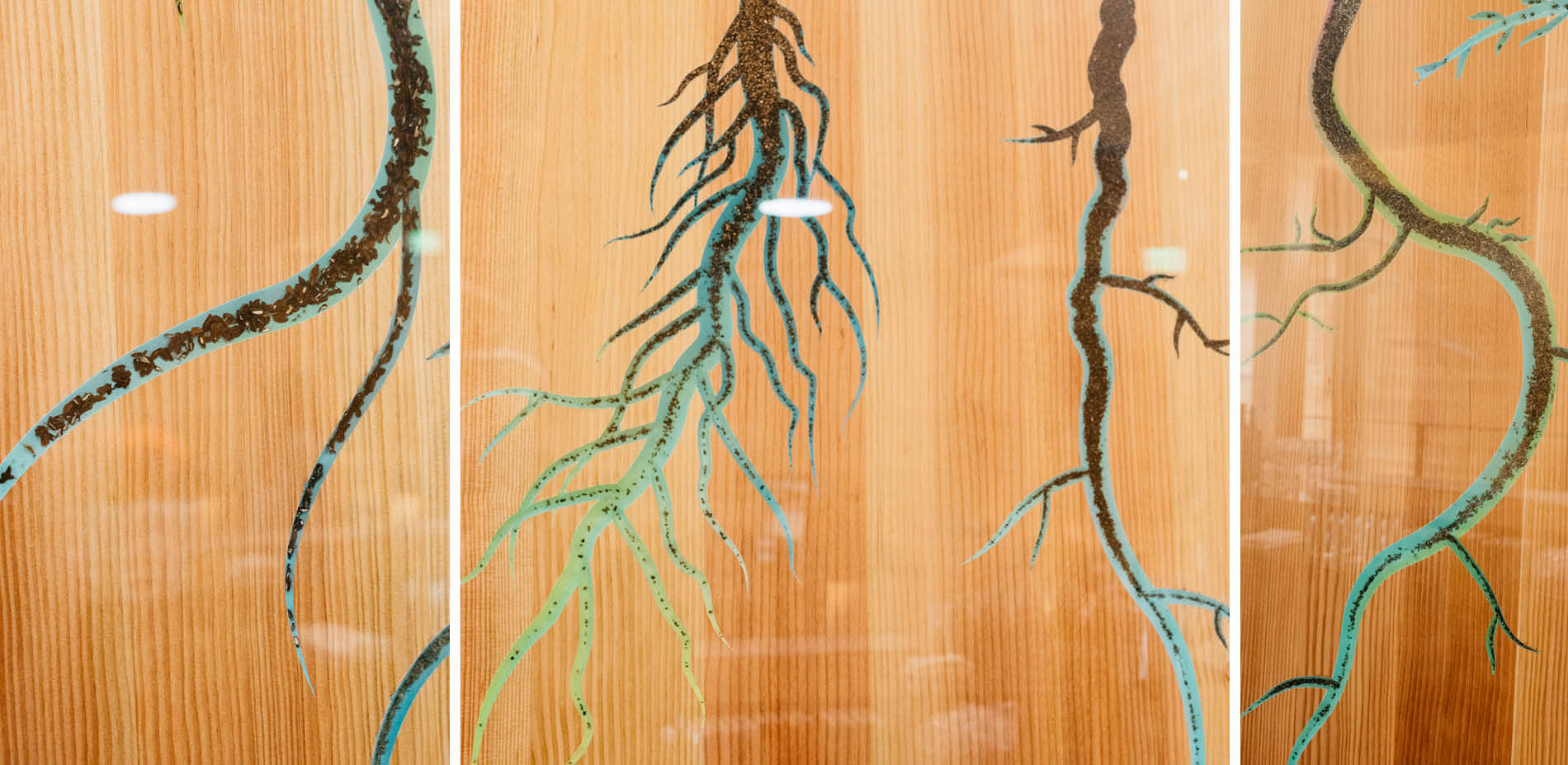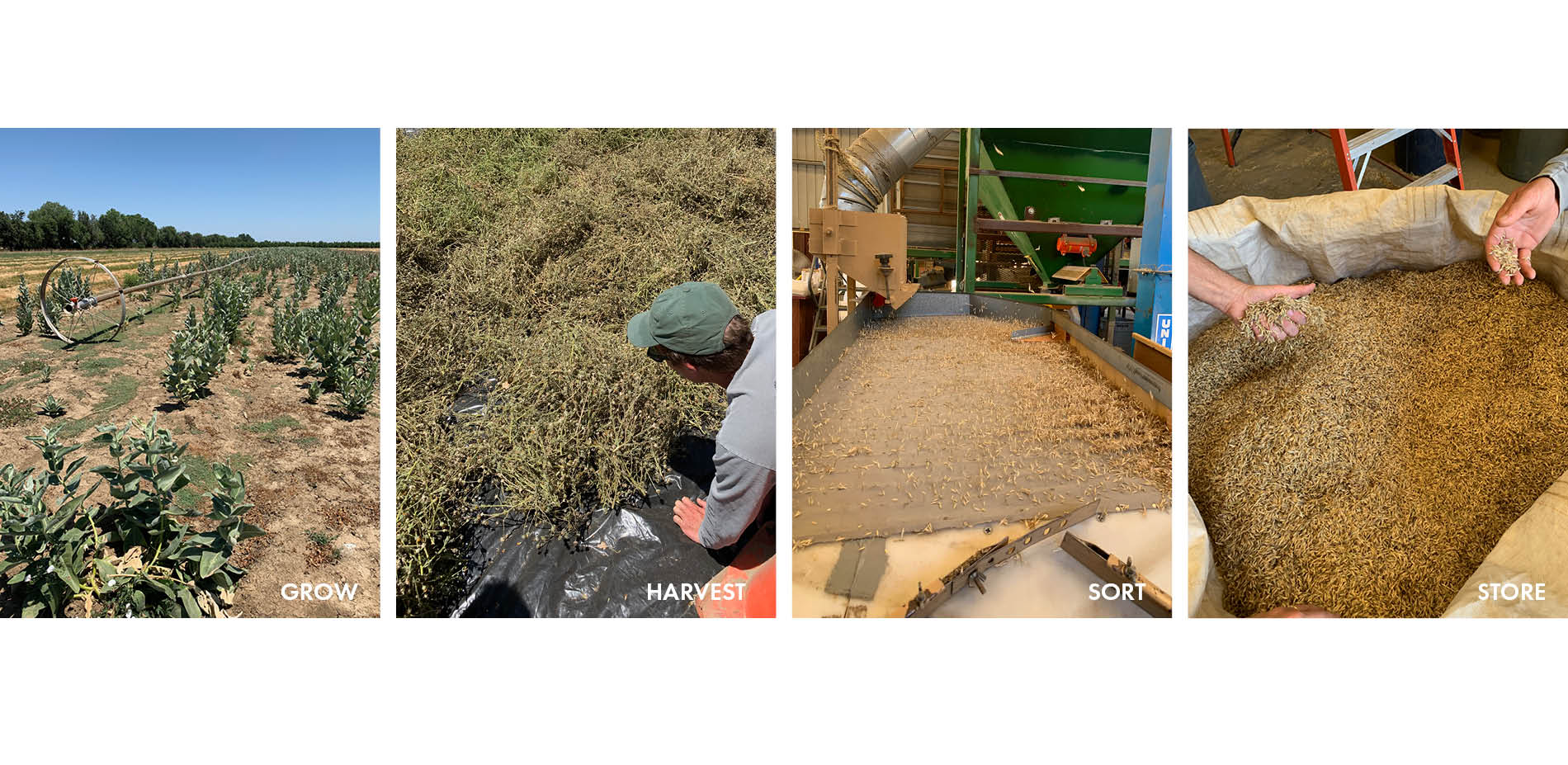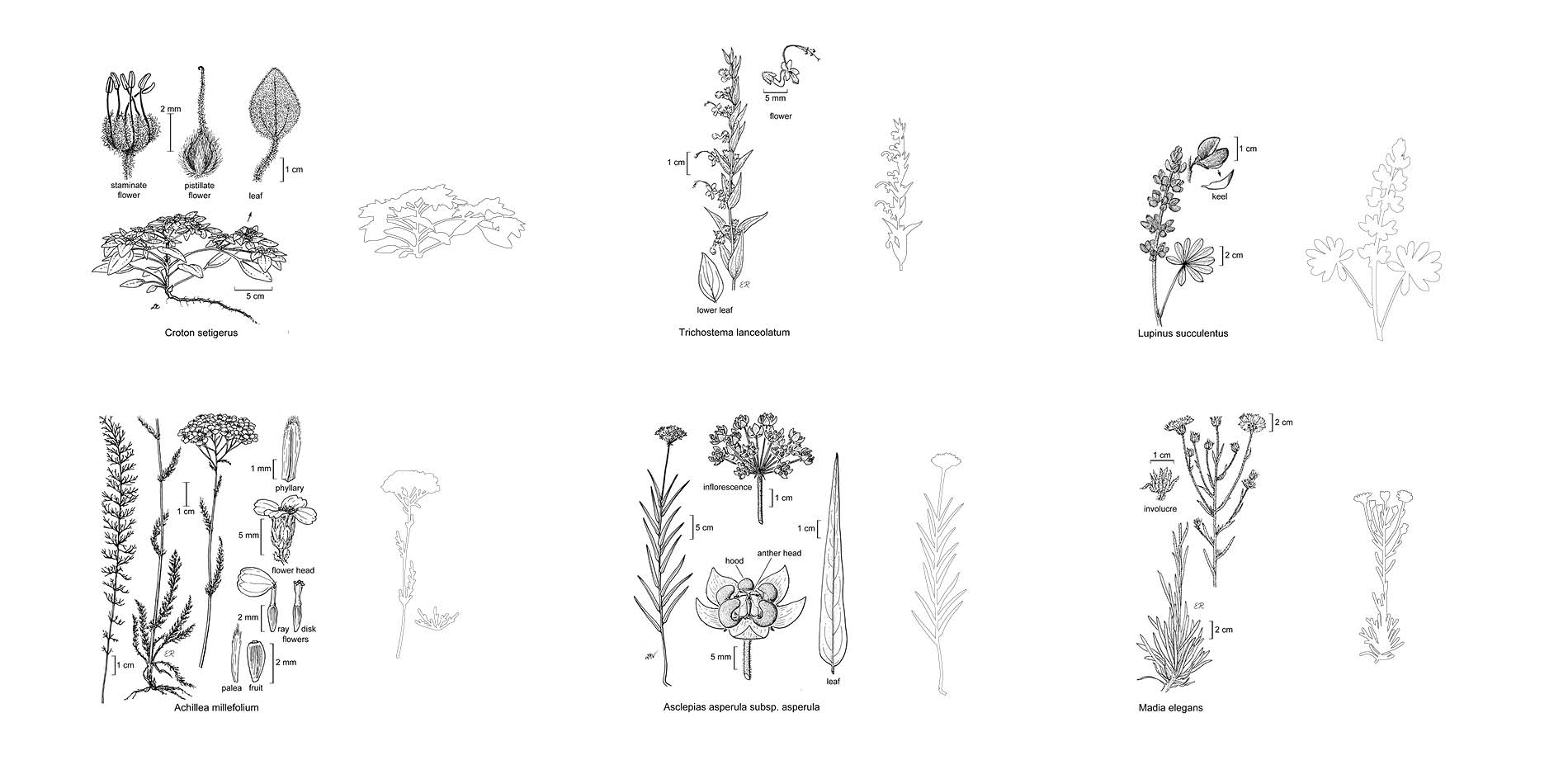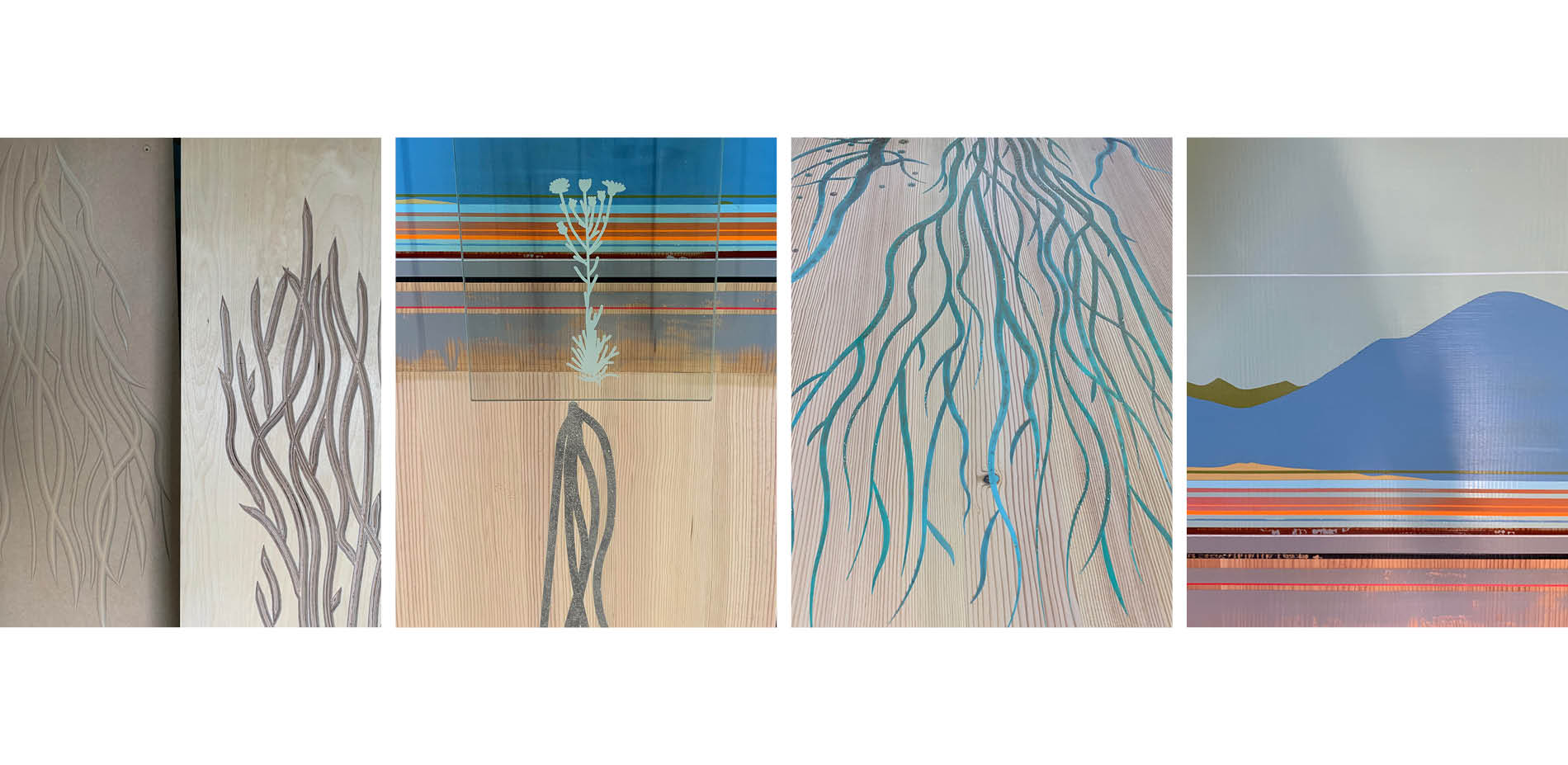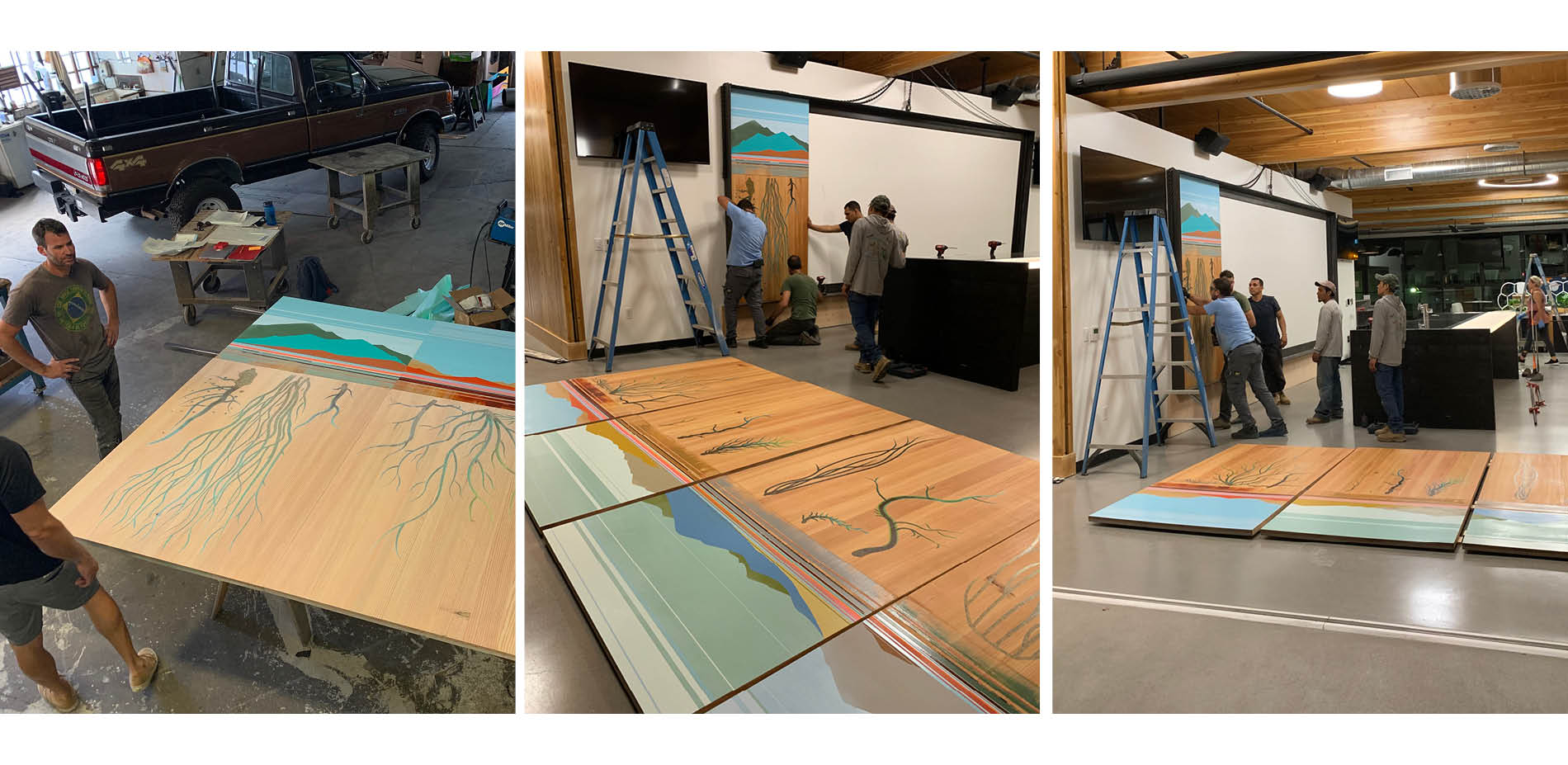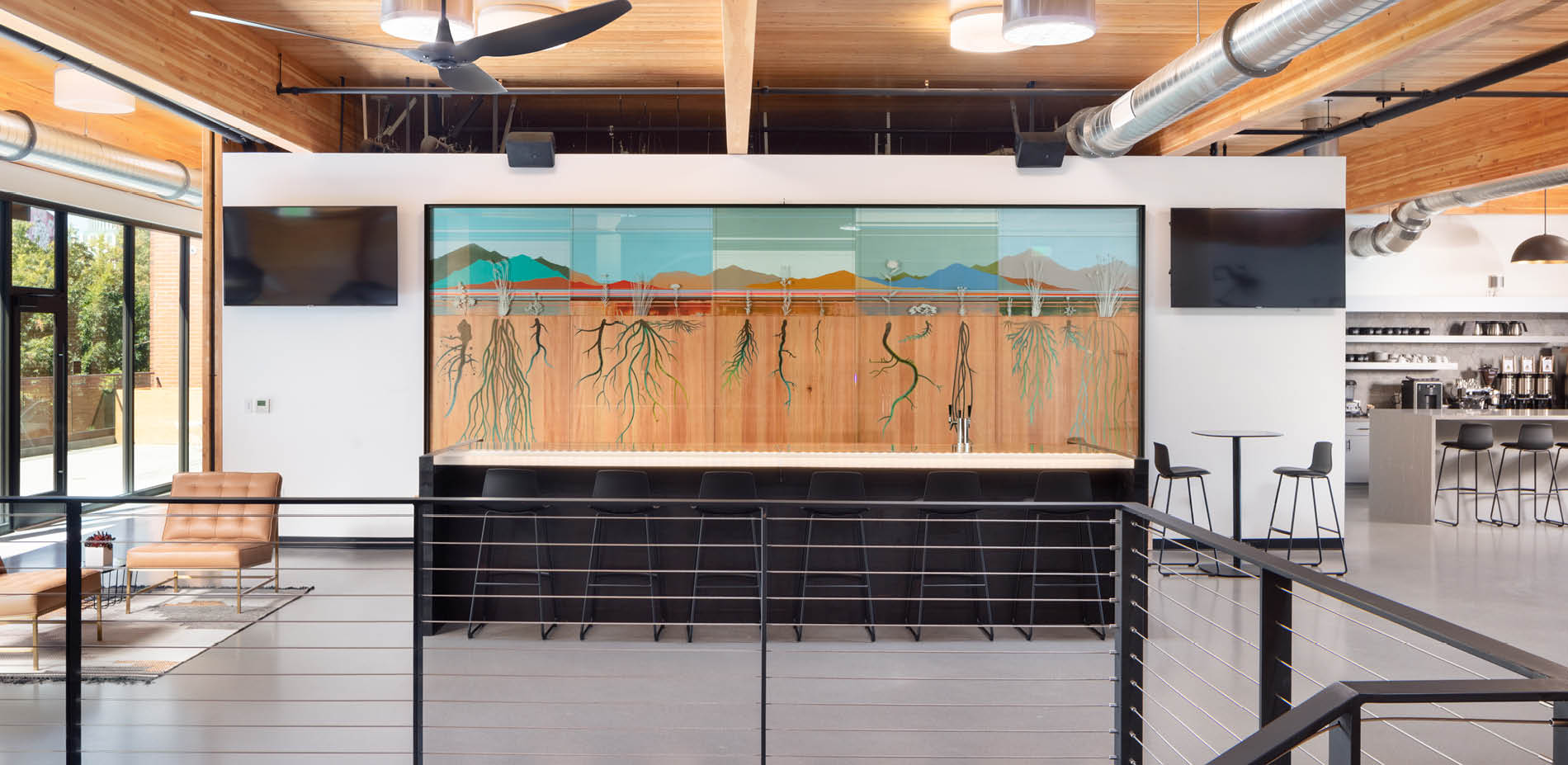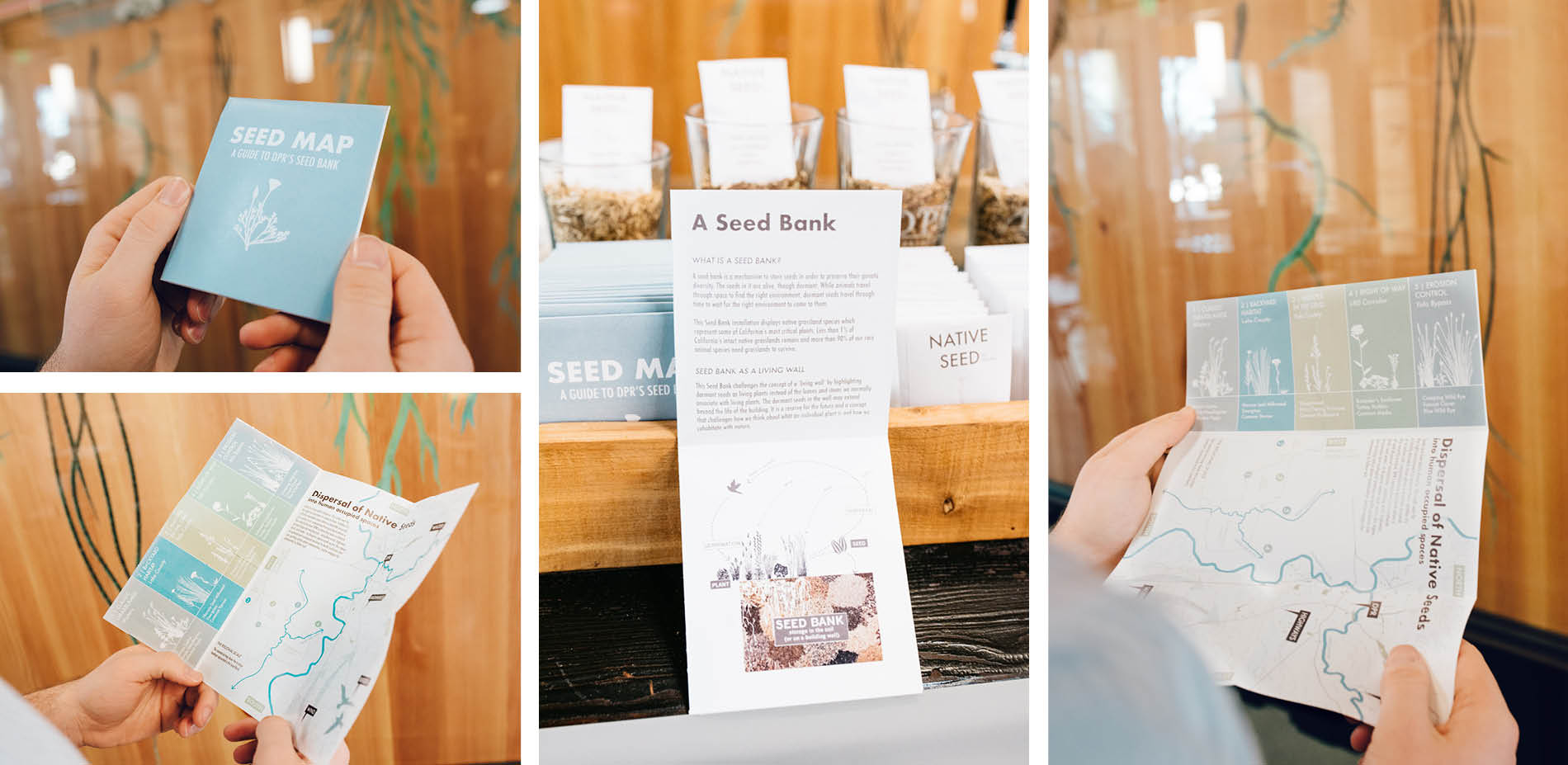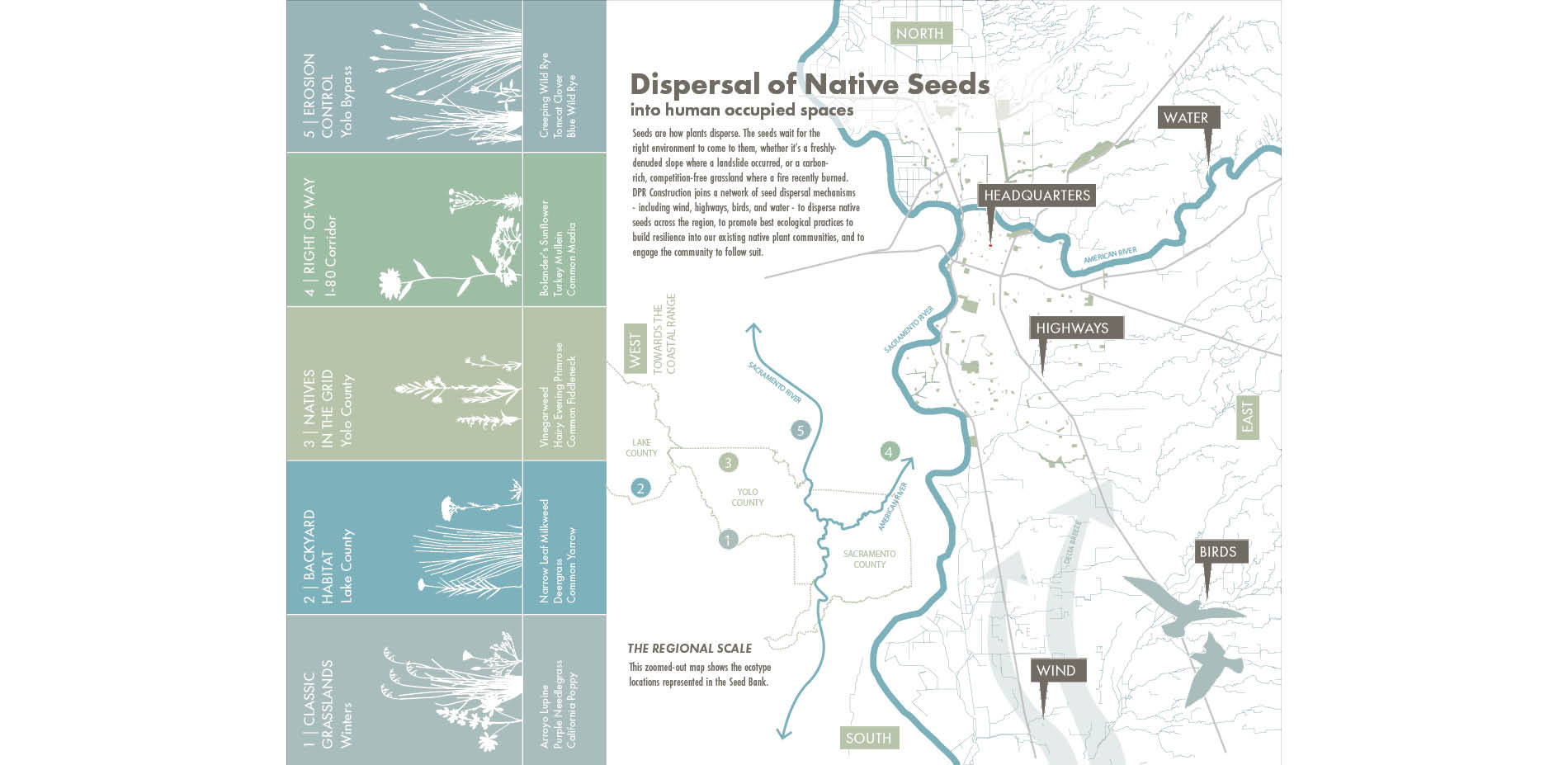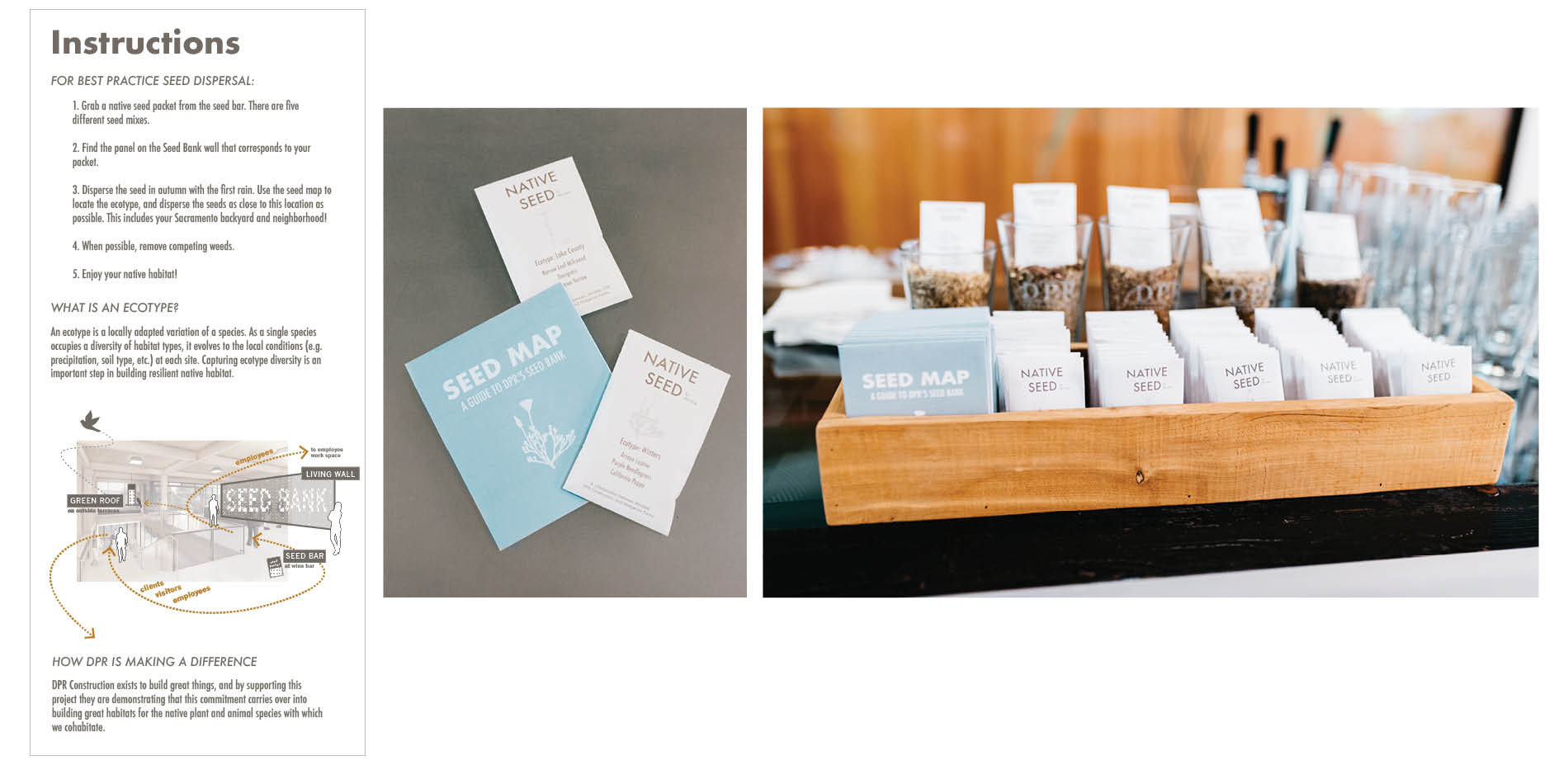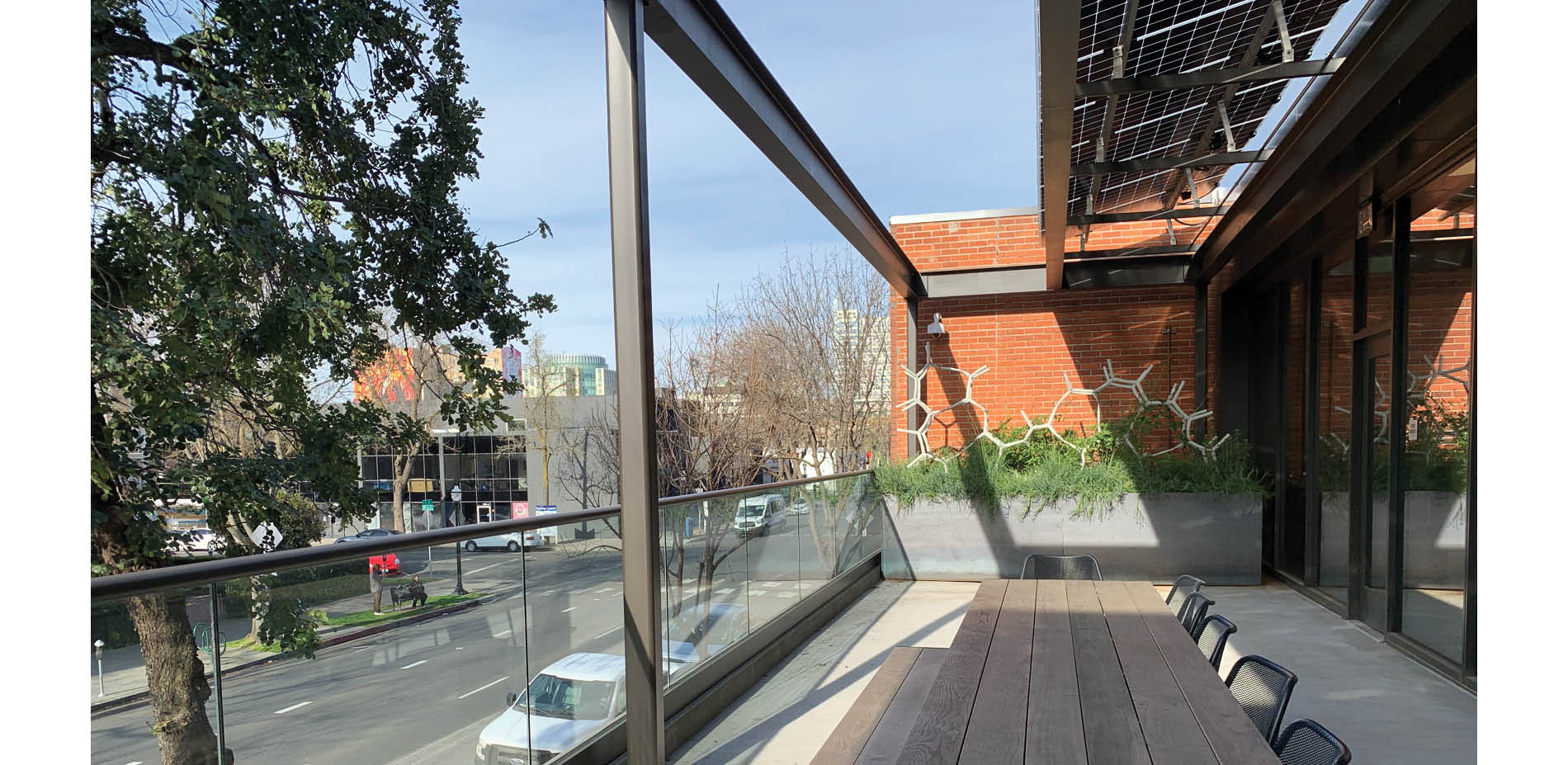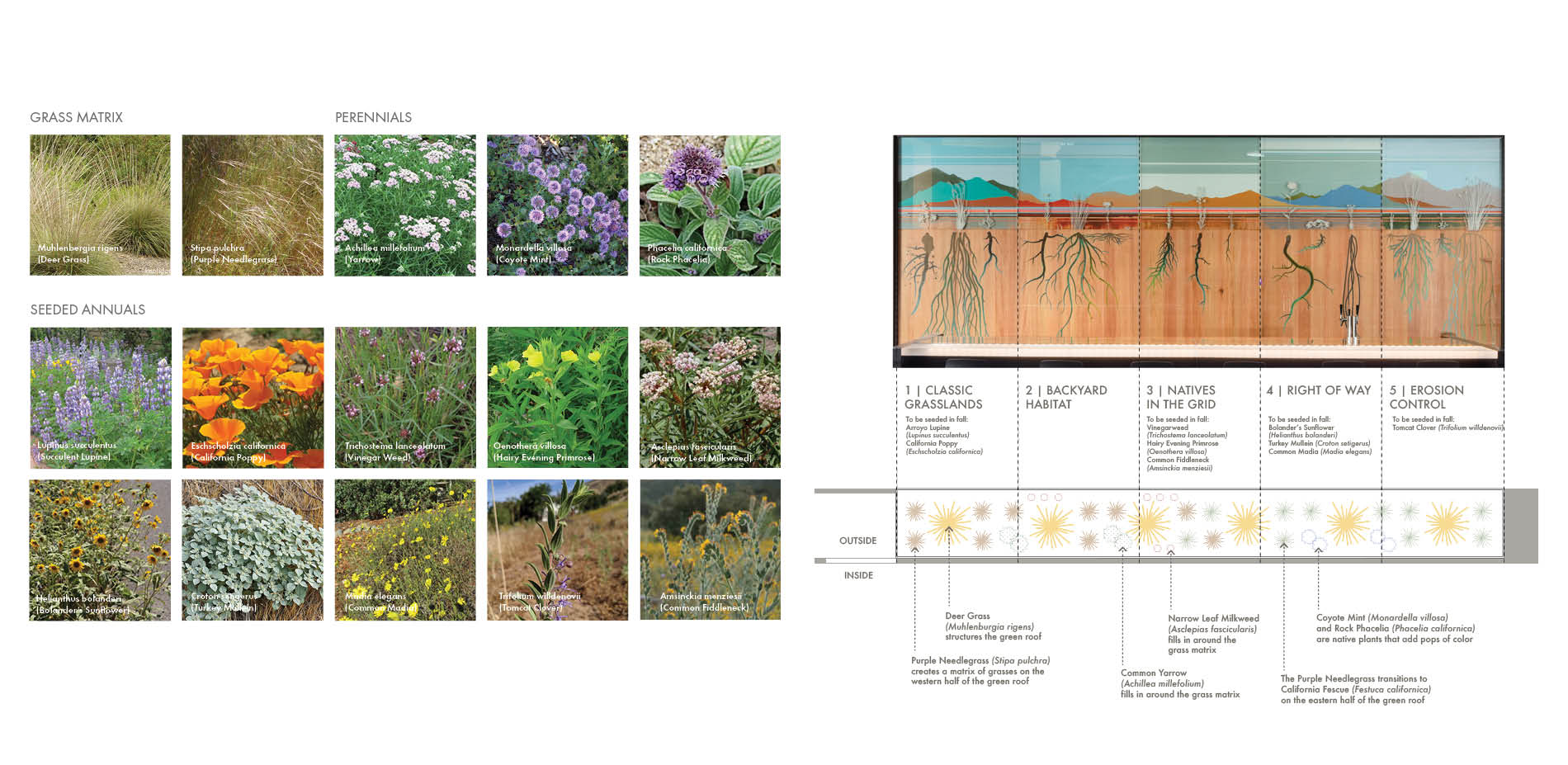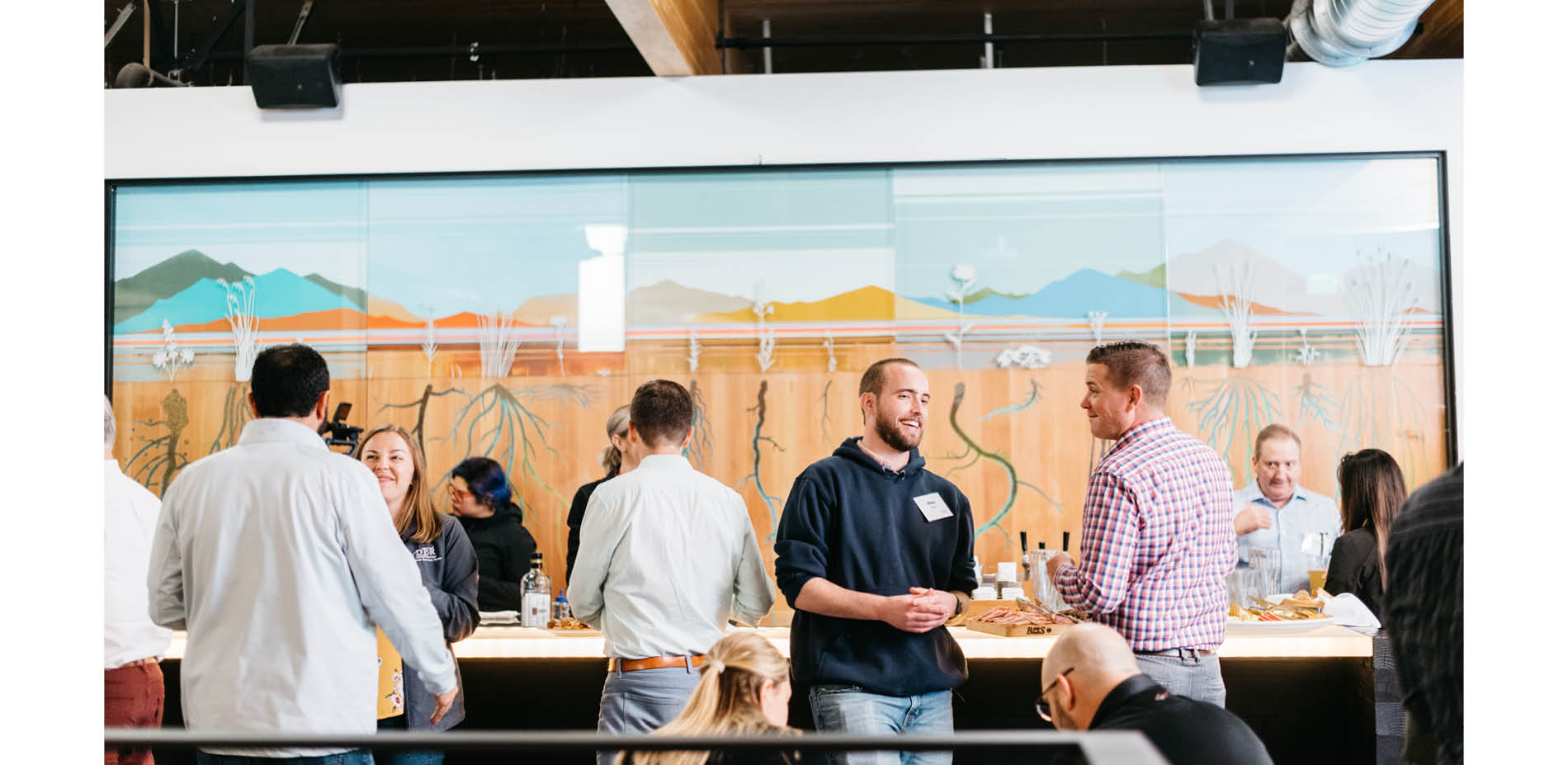The Seed Bank: A New Approach to the Living Wall
Award of Excellence
Communications
Sacramento, California, United States
Miridae
Client: DPR Construction
Where some companies signal sustainability with a green wall, the Seed Bank represents an effort to create a new kind of living wall that encourages interaction, engagement, and eventual plant dispersal through low-tech means. While many flora rely on wind, gravity, or fauna for propagation, this display distributes seeds in a more direct-to-cultivator manner. A seed bar provides visitors with clearly presented graphics as well as information and seeds that they can then take back to their respective landscapes to sow, allowing the Seed Bank to extend into and restore the landscape in which it resides.
- 2020 Awards Jury
Project Credits
Micah Crandall-Bear, Artist
Marc Foster, Fabrication, Installation
Dan Tran, Fabrication
Tre Borden, Art Consultant / Curator
Hedgerow Farms, Native Seed Supplier
Jepson Herbarium, Botanical Drawings
Emily Allen and the California Native Grasslands Association, Consultant
Thomas Ramey, Green Roof Planter Fabricator
Lizzie Needham, Landscape Architecture Intern
Project Statement
Our project began with a call for a “living wall” from a prominent national construction company moving their regional headquarters to Downtown Sacramento. They wanted a living wall that was sustainable, provided a sense of location, and required little maintenance. We wanted to create something that motivated the company to use habitat-crucial native plants in their construction projects and that would highlight the beauty and the benefits of these often-overlooked species.
Thus, we decided to pursue a different concept for this living wall, one we have titled, the Seed Bank. Challenging the design standard that highlights the leaves, stems, and flowers we typically associate with plants, the Seed Bank uses dormant, live seeds of important California native species to highlight the unseen elements of these plants and to organize them in a spatially-explicit way that ties the local species to their natural and potential distributions.
Project Narrative
INTRODUCTION
The Seed Bank has a literal function as well as an inspirational and educational one. In its most basic form, it is an actual seed bank: it stores seeds through time and preserves their genetic diversity in case they become rare or extinct in the wild. And it is living! The seeds are not dead, but rather vessels through which plants travel through time. Our Seed Bank concept is a more sustainable approach to the typical living wall, which is inherently resource-intensive in the water, energy, and maintenance required.
Our goal for the Seed Bank was not just to create a beautiful and low-maintenance installation, but also something that would positively influence decisions made by an impactful building company, arming its employees and partners with the motivation, language, knowledge, and resources to incorporate habitat-focused native landscapes into their projects. To achieve this, we also created an interactive Seed Bar and Seed Map that literally put seeds into people’s hands while explaining the importance of the species featured in the Seed Bank and how and where they should be planted.
Through the story of these native seeds, the Seed Bank taps into larger conversations about the importance of native plants in providing ecological resilience in our communities. It reinterprets the definition of a living wall and encourages us to shift our mindsets to promote this alternative, more sustainable vision.
THE SEED BANK: A RESERVE AND INSPIRATION FOR A RESILIENT FUTURE
Construction has historically come at environmental and ecological costs. Humans have converted the vast majority of land in the continental United States into urban and suburban areas (54%) and agriculture (43%), leaving only around 3% relatively untouched as of 2009 (Tallamy 2009). We’ve planted the same few plant species in most of our cities and suburbs, considering convenience, aesthetics, and precedent as top priorities. In doing so we have created an unsustainable condition where a small number of plant species dominate our landscapes, and the biodiversity of insects, birds, and other wildlife depending on diverse native plants for survival are declining rapidly (UN Report, 2019).
This does not need to be the case. The impact of development can be positive and sustainable, and there is a huge upside in terms of human well-being in creating urban and suburban areas that connect people to nature. Species diversity also provides ecological services that we need now more than ever: it fosters ecological resilience by damping the effects of ever-more-frequent and intense natural events like fires, floods, and invasive insect outbreaks.
Seeds are a wonderful example of how evolution and environment relate to shape and form: like animals, they move through space via wind, water, and animal dispersal to find the right environment. Dormant seeds, however, travel through time to wait for the right environment to come to them, whether it’s a freshly-denuded slope where a landslide occurred, or a carbon-rich grassland where a fire recently burned. These seeds have adaptations that allow them to stay dormant until the ideal environmental conditions occur.
These concepts are translated into the Seed Bank, an 8’-high by 20’-long installation, located at the heart of our client’s headquarters, an innovative mass timber frame building. Easily accessible in the building’s lobby, the Seed Bank encourages engagement and conversation amongst everyone who passes through the space. The wall draws people in with its detailed, colorful, and textured design; they walk away with the informational Seed Map and local native seed packets from the Seed Bar.
THE DESIGN: A COLLABORATIVE PROCESS
This project began as a close collaboration between a landscape architect and an ecologist, and expanded to include local artists who physically built (fabricated, painted, and installed) the Seed Bank.
The Seed Bank is a representation of native California grassland communities, depicted both in section and in elevation. Above the soil line, botanically accurate silhouettes of fifteen native California plant species sit in front of a colorful representation of the Coastal Range, which is located to the west, in the direction one faces when looking at the installation.
In contrast to the detailed and delicate plant stems, leaves, and flowers shown above-ground, the below-ground roots are exaggerated to showcase their different forms, from more fibrous grass roots to tap-roots. The roots were drawn based on best-known data and have been abstracted to highlight the difference between our higher-resolution understanding of plant biology above-ground versus our very limited understanding about their biology below-ground. The roots were then routed out of solid douglas fir and spray painted for a background pop of color, reminiscent of the fluorescent imaging used by scientists to estimate otherwise-invisible root structures. Each root is populated by the seed of that particular plant species and preserved in resin.
The Seed Bank is divided into five panels, with each panel highlighting a different application of the specified seed mixes. The five project types include: classic grasslands, backyard habitat, the urban grid, right-of-ways, and erosion control. Whether one is looking to create habitat in their backyard or restore a slope to mitigate erosion, the Seed Bank is a guide for what to plant.
The five panels are also organized around the ecological concept of ecotypes. Each panel represents a different ecotype, meaning the seeds showcased in that panel were sourced from a similar area and have locally-adapted genetics. Designing with ecotypes is a best practice in restoration because even though a single species may occupy a diversity of habitat types, it evolves to the local conditions (e.g. precipitation, soil type, etc.) at each site. Capturing ecotype diversity enhances genetic diversity and facilitates more rapid evolution, which are important steps in building resilient native habitats which can adapt to rapid climate change.
This project brings together a diversity of partners that are oftentimes on different sides of development, including our client (the construction company), a local native seed grower, a non-profit dedicated to promoting naive grasslands, and the Jepson Herbarium. The collaborations were formed and best practices were discussed during the multi-disciplinary design process, creating a precedent for continued collaboration that we hope will build more resilient projects that support the coexistence of humans and native habitat.
SCALING THE CONCEPT: SEED MAP + SEED BAR
The seed bank concept is scalable and conceptually accessible. It has brought direct positive impact with every step of the design, build, and education process. Our goal with the Seed Map, the interactive take-away brochure, and the Seed Bar, is to physically put the information and the seeds from the Seed Bank into the hands of employees and visitors, so they can share information and spread seeds. The Seed Map identifies the native plant species and educates viewers about seeds banks, seed dispersal methods, and best planting practices.
The Seed Bank is integrated with other elements in the headquarters that facilitate seeds traveling through space. Two small green roofs are planted with the species highlighted in the Seed Bank. The plant layout was organized to test dispersal patterns, particularly from birds and wind. This is an exciting potential for green roofs - the idea that species can move down from roofs, finding their way into unplanted nooks and crannies within the urban fabric. Our team looks forward to monitoring and mapping the movement, both on the roof and in the neighborhood blocks surrounding the headquarters.
The Seed Bank supports communities of people, plants, ecosystems, and seed suppliers. It disperses seeds both literally and figuratively, tactically inserting native plants into the urban fabric, while raising ecological awareness to an audience of builders and developers that play a huge role in the future of our built environment. By learning about and promoting the crucial benefits of native plants and native seed, we can all be better poised to solve larger-scale crises like forest fires, climate change, and erosion by building resilient habitat in our backyards and communities.
Products
- Hunter Industries
- J-Drain
- Hedgerow Farms
- American Soil and Stone
Plant List:
- Arroyo Lupine
- Purple Needlegrass
- California Poppy
- Narrow Leaf Milkweed
- Deergrass
- Common Yarrow
- Vinegarweed
- Hairy Evening Primrose
- Common Fiddleneck
- Bolander's Sunflower
- Turkey Mullein
- Common Madia
- Creeping Wild Rye
- Tomcat Clover
- Blue Wild Rye
